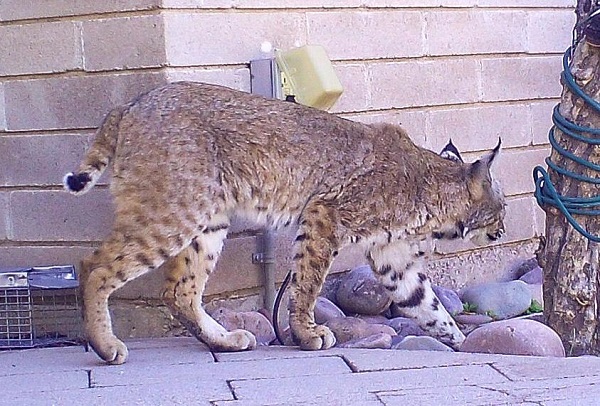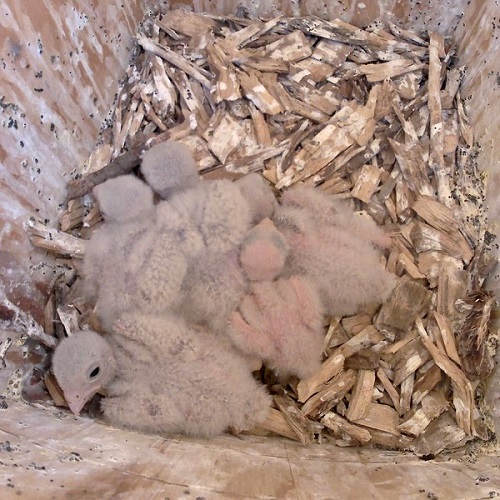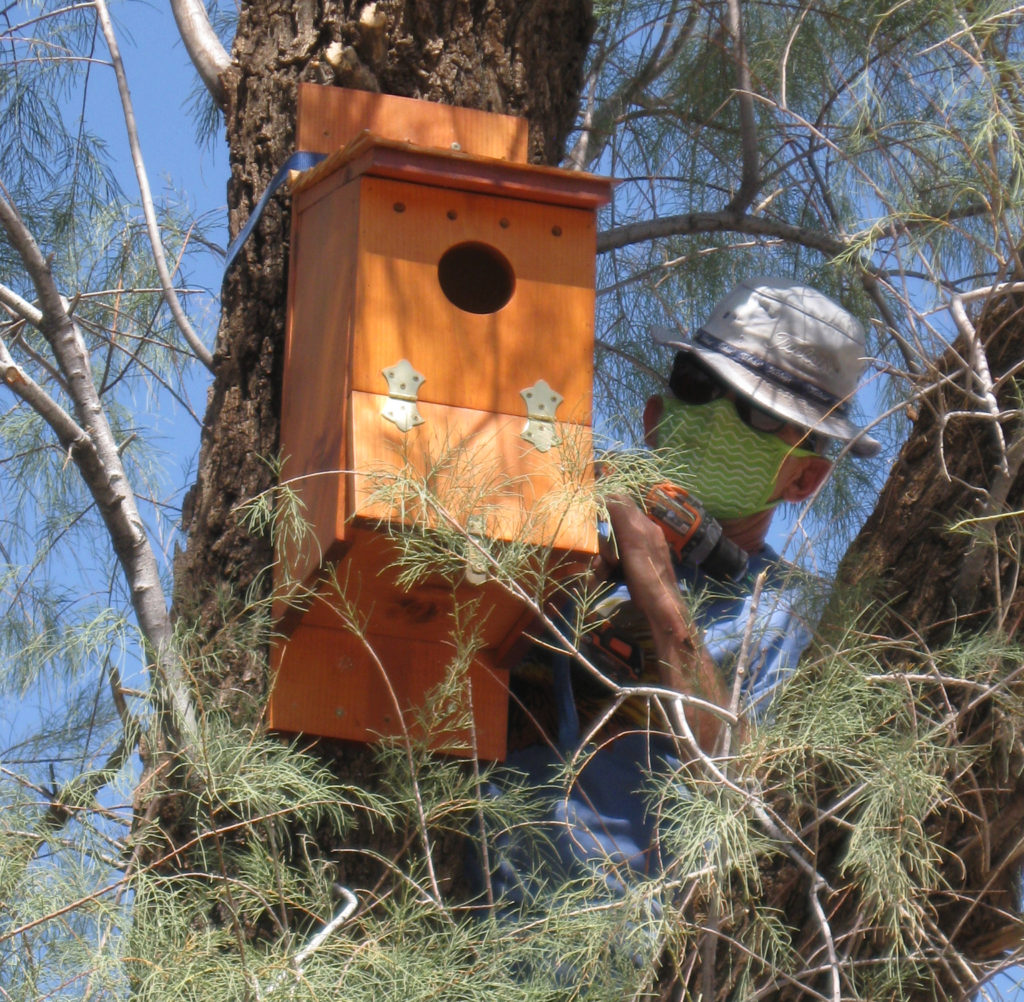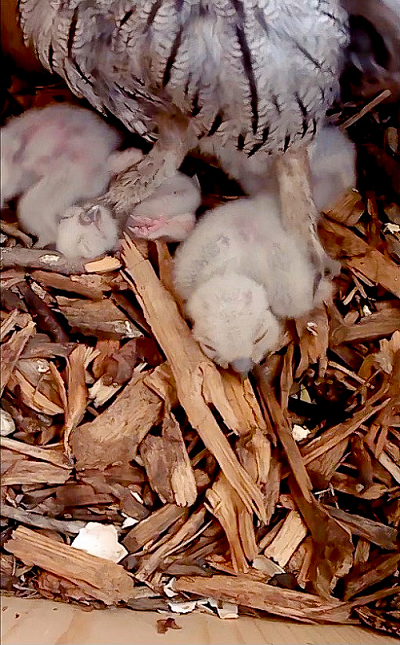Friends of Rio Vista distributes bimonthly bulletins via email and publishes key information from these bulletins here. To start receiving our bulletins, sign up here.
In this issue, we focus on a Rio Vista life lost too soon and on some new lives that we can hope for in the next year. We also ask for some volunteer help with maintaining the conservation project’s closures of unauthorized trails in the park. Thank you so much for your support for protecting and enhancing the natural assets of Rio Vista.
Peril Near the Park: Wildlife at Risk
Early on Saturday morning, April 24, we lost a member of the Rio Vista community: a bobcat was killed — struck by a vehicle — on Tucson Boulevard, just south of the main entrance to the park. He or she was relatively small and may have been a young individual. Tucson bobcats are in danger from vehicle strikes throughout the city, but this loss, so close to a natural area dedicated to wildlife protection, seems particularly sad.

Friends of Rio Vista reported the death to the Bobcats in Tucson Research Project, a 3-year study of members of this species living along the urban / wildland interface. Under the umbrella of the Southwest Wildlife Conservation Center, the research team is collecting data on bobcat activity with the goals of reducing conflicts between bobcats and humans, increasing knowledge of bobcat ecology and behavior, and taking responsible action toward urban bobcats and their natural habitats. You can contribute to this work by reporting your observations of bobcats or by taking an online survey.
Early on Sunday morning, April 25, the day after the Rio Vista bobcat died, a gray SUV sped up Tucson Boulevard before turning into the Rio Vista parking lot. What reason could anyone have for speeding to the park at 6:30 a.m.? Please ask your friends and neighbors who visit the park to drive slowly and to watch for wildlife. Snakes, spadefoots, lizards, tarantulas, pinacate beetles, hawkmoths, Lesser Nighthawks, Great Horned Owls, ground squirrels, desert cottontails, pocket mice, and a host of other animals besides bobcats are crossing the roads at the hours when they’re hardest to see. Their lives are in our hands.
Many thanks to park neighbor and supporter Barry Shulman for first reporting the loss of the Rio Vista bobcat and to Cheryl Mollohan, principal investigator of the Bobcats in Tucson Research Project, for taking the report and for sharing information on the study.
Equal Opportunity Housing: A New Nursery for Falcons or Owls

Thanks to the generosity of a park neighbor and a research biologist, Rio Vista’s small raptors now have a new option for nesting real estate.
Before he and his wife moved to the RillitoBend Neighborhood, Mike Dolan built a nest box — complete with pine-shingled roof — to accommodate American Kestrels (Falco sparverius) or Western Screech Owls (Megascops kennicottii). Moved by his appreciation of Rio Vista’s natural area, which is right across the street from his current home, Mike offered to donate the box so that it could be installed there.
A trustee of HawkWatch International, Mike Shaw has been instrumental in a community-science study of kestrels in the U.S. West. As part of this research, he has installed many kestrel nest boxes along the Rillito corridor in Tucson, on both private and public land, and has involved volunteers in monitoring their success. Late last year, Mike put up two of HawkWatch’s nest boxes in the area of the eucalyptus grove at the southern end of Rio Vista.

On May 4, with the approval of Tucson Parks and Recreation facilitated by Friends of Rio Vista, Mike D and Mike S joined forces to make Mike D’s custom-made nest box available to kestrels or screech owls in the park. Mike S climbed a ladder into a tamarisk tree in the northeastern corner of Rio Vista and, with Mike D’s help, carefully chose a spot for the box that takes sun exposure and nesting behavior into account. They’ll work together to monitor any activity near or in the nest box. (HawkWatch is gathering data on screech owls, as well as on kestrels.) Even though May is late in the breeding season for kestrels and owls, Mike S noted that these small raptors are always on the lookout for nesting opportunities for the following year.


Meanwhile, screech owls have moved into at least two nest boxes that Mike S has installed on private property in RillitoBend—and one is now home to four chicks!
Many thanks to Mike D and Mike S for making this generous contribution to wildlife habitat in the park and to Ann Jefferson, Sean Nicholson, and Mike Hayes at Tucson Parks and Recreation for approving the nest-box installation and for supporting the protection of Rio Vista’s natural assets.
Volunteer Opportunity: A Facelift for Sawhorse Signs
Now that the sawhorses blocking the entrances to rogue trails are all standing on their own four feet (thanks again, Anne Watson, Ann Cooper, and Bob Watson!), it’s time to replace missing or illegible “Why” signs on the crosspieces. We need one or two volunteers who would be willing to count the sawhorses that need sign replacements and to mount the new signs with a staple gun, once they’ve been printed and laminated. Friends of Rio Vista will provide all materials and equipment. The work can be done on whatever schedule suits the volunteer(s). If you’re interested in contributing to ecosystem enhancement at Rio Vista in this way, please e-mail us at ProRioVista@gmail.com. Thank you!

